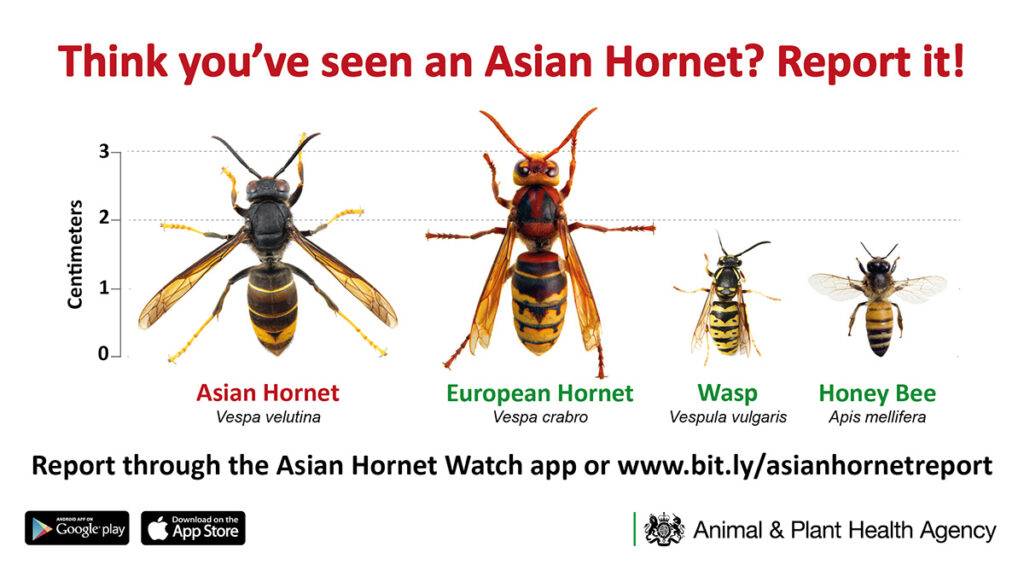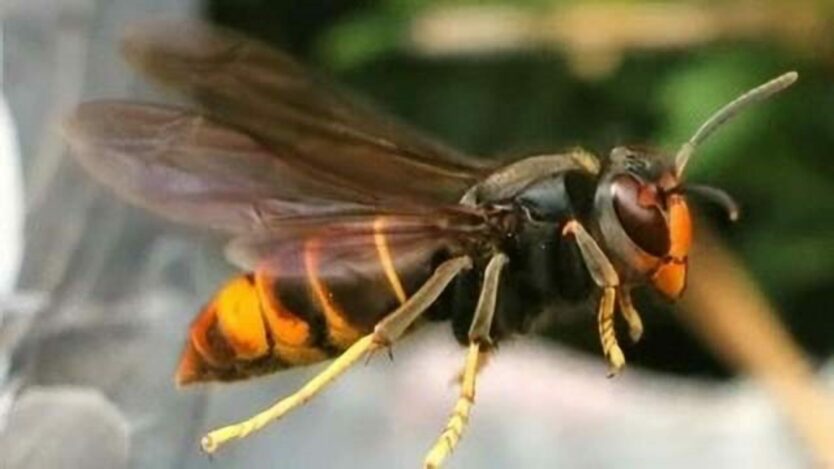Golf club staff and members are well placed to help thwart the spread of an invasive hornet species that is threatening the honey bee population.
The British Beekeepers’ Association (BBKA) is appealing for help from golf clubs as it attempts to prevent the spread of an invasive species that has the potential to destroy populations of pollinators.
Working alongside Defra and the Non-Native Species Secretariat, the BBKA highlighted how numbers of Asian hornets increased dramatically last year — more were discovered than in the previous six years combined — and there are concerns the insect may soon become established in the UK.
Asian hornets are considered the greatest threat facing honey bees in a generation, as one hornet can consume up to 60 honey bees in a day. If native pollinators and insects are reduced, the ‘ecological disaster’ will have a huge impact on other wildlife species, as has already been seen in a number of European countries.

Furthermore, there is also a public health risk, as Asian hornets can be aggressively defensive of their nests if disturbed. Nests are often built low to the ground and can easily go undetected.
It is therefore important that people who enjoy outdoor spaces and engage in outdoor sports know how to identify and report any suspected sightings or nests and know how to keep themselves safe in the process.
The BBKA is spearheading a nationwide campaign of awareness and is encouraging as many people as possible to download the official Asian hornet app so suspected sightings can be logged. Experts from the Government’s National Bee Unit will then be notified and nearby nests traced and safely destroyed.
How to identify the Asian Hornet:
- Body: generally dark in colour, black/dark brown
- Rear: key feature is dark brown with a distinct yellow/mustard band
- Waist: fine, bright yellow ‘belt’
- Legs: brown upper part with distinct yellow lower leg, in fact it is often called the ‘yellow-legged hornet’
- Head: black head with orange/yellow face
- Shape: sleek, wasp/hornet-like as opposed bee-like, or fly-like, with large compound eyes
- Size: slightly smaller than the native European Hornet, but larger than the Common Wasp. Worker hornets measure up to 25mm, queens 33mm in length
Important guidance for outdoor workers
This advice is for anyone working outside, commercially, or privately, and applies to gardeners, tree surgeons, farmers, branch age contractors, roadside maintenance personnel, parks and gardens staff, footpath and countryside maintenance personnel.
- Examine the area before you start work.
- Look for any unusual insect activity or anything that could be a hornet’s nest.
- If you suspect unusual insect activity or a nest, stop!
- Stay at least 10 metres away and do not touch, disturb, or cause vibrations around a nest.
- Report any possible hornet or nest sightings to the [email protected], or on the Asian Hornet Watch App (available to download on Android and iPhone), with a photo if safe to do so.
Early in the season the nests may be the size of a tennis ball, and from late July the size of a football and larger, up to backpack size.
Nests during early season can be found around:
- Brambles
- Hedges
- Building and roof spaces
- Cliffs
Nests during late season can be found:
- Usually high up in trees.
- ….or all of the above.
They are usually well camouflaged amongst foliage and very difficult to see.
What to do if you see an Asian Hornet or a nest
Asian Hornets: Individuals do not tend to be aggressive. If you can, take a photo and send it in on the Asian Hornet App or to [email protected].
Nests: All suspected nests should be reported to the above addresses. You should never attempt to disturb, remove or treat them yourself. Asian Hornets have been known to defend their nest area aggressively.
What to do in the event of an Asian Hornet sting
Immediately move to a place of safety – one sting can lead to an aggressive reaction by more of the insects. Apply a cold compress or ice pack to the sting site. Elevate the sting area if possible. Avoid scratching.
Symptoms
- A sting will usually cause a red, swollen lump. This may be painful and itchy, but symptoms should improve within a few hours to a few days.
- Some people have a mild allergic reaction and a larger area around the sting may become swollen and painful.
Ask your pharmacist about painkillers, anti-itching creams and antihistamines.
Always seek medical advice if:
- The sting is in the mouth, throat or near the eyes.
- Fever, swollen glands for flu like symptoms develop.
- Symptoms get worse or don’t improve.
Serious allergic reaction (anaphylaxis):
Anaphylactic shock is a serious condition and urgent medical assistance should be sought. Symptoms and how to deal with anaphylaxis are on the NHS website.
Click here to download an Asian hornet alert poster (1)



